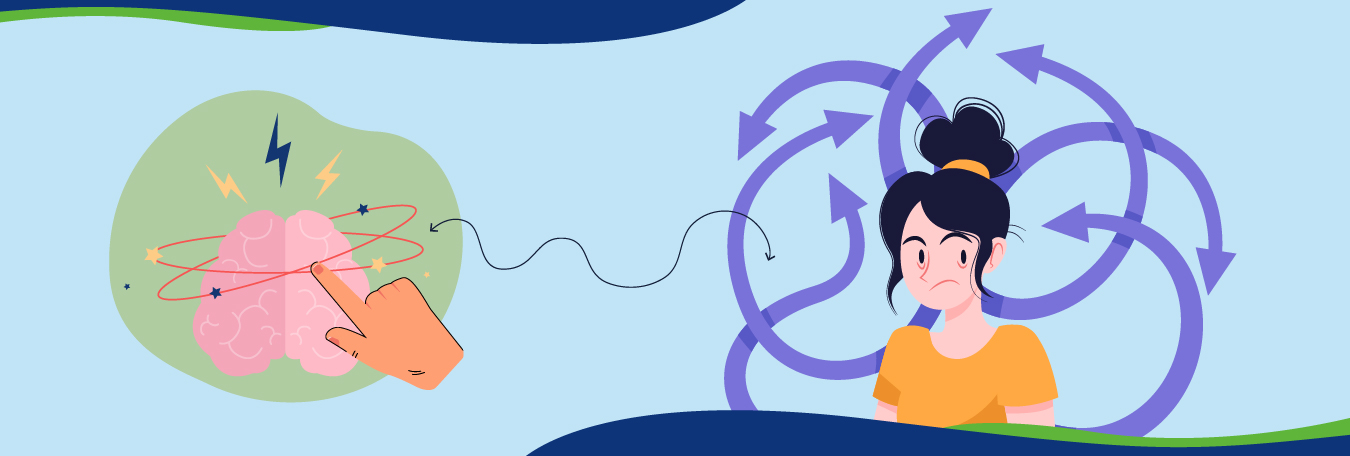ADHD has a lot of overlooked symptoms and one of these is object permanence. You are probably wondering what it actually is. The previous statement is exactly what forms the cusp of discussion here. Follow the words below to know everything about the object permanence ADHD symptom.
Defining ADHD
Before we get into object permanence in ADHD, we should talk about ADHD itself. ADHD is an abbreviation of the term attention-deficit/hyperactivity disorder, which is a neurodevelopmental disorder that predominantly strikes children between the ages of 3 and 12 but can also go into adulthood as well if it is left untreated. ADHD and something like the object permanence ADHD symptom impairs the executive functioning of the affected individual.
Executive functioning relates to cognitive processes that are needed to sustain life every day. These cognitive processes are essentially affected when ADHD’s symptoms like hyperactivity, freeze, disorganization, time blindness, emotional dysregulation, procrastination, impulsivity or restlessness, and anxiety strike affected individuals. One of these is object permanence, which is also one of the most overlooked ADHD symptoms. Let’s talk about this in much more detail in the next section!
Read More: Understanding Time Blindness ADHD Symptom
What’s Object Permanence in ADHD?
It essentially refers to the ability to remember objects even when they are out of sight. However, object permanence is affected considerably by ADHD. That means ADHD-affected individuals may not remember they left a certain object that they possess. For them, it is just like the old saying, “Out of sight, out of mind.” When we are referring to object permanence and ADHD together, we mean the ability to remember things without some kind of sensory cue, like seeing it right in front of you or hearing a verbal reminder, is radically impaired.
Read More: What is ADHD? Let’s Discuss Everything About It!
This is different from forgetfulness, as they tend to believe these objects simply don’t exist when they are out of sight and can only be remembered with certain cues or if these objects are essentially right in front of you. This phenomenon of a symptom might be more aptly referred to as the ability of “object constancy.” It is essentially the ability to understand that an object continues to exist, even though it can no longer be seen, heard, or touched. As a result, this leads us to the next question: Is object permanence a symptom of ADHD?

Is Object Permanence a Symptom of ADHD?
To understand if object permanence is indeed a symptom of ADHD, you need to rewind the history of this term a bit. The term “Object permanence” was coined by psychologist Jean Piaget in the 1960s to describe the phenomenon of how babies react upon seeing their toy as they forget their toy when it is out of sight. He would say that babies have object permanence when they remember their toys even after these toys are out of sight. Most infants do not really grasp the concept until around 9 months old, although according to The American Academy of Pediatrics, some babies can demonstrate an understanding of object permanence as early as 4–5 months of age. This tells us it is something that can exist without the existence of ADHD. But what if we asked what if object permanence is thought to be worse in people with ADHD? Will that make sense, considering what we have read till now and also considering how it can come as symptoms (such as in the shape of emotional permanence) of other mental conditions such as depression and bipolar disorder?
Read More: ADHD and depression: Symptoms, Causes & Treatment
Is object permanence thought to be worse in people with ADHD?
As mentioned before, ADHD is a neurodevelopmental condition that leads to symptoms such as:
- Impulsivity, which involves hasty or harmful decision-making, risk-aversion, and highly interruptive nature (it can be a nuisance to others)
- Hyperactivity, which often leads to fidgeting, restlessness, and constant subconscious movements in different body parts
- And last but not least, inattention to tasks and difficulty keeping focused
Additionally, most of the time, an affected individual receives a diagnosis usually during childhood. The percentage of ADHD-affected individuals is capped at 8.4% for children and 2.5% for adults, according to the American Psychiatric Association. Furthermore, boys are more affected by ADHD than girls. Why are we telling you this? Well, the way affected individuals go through ADHD, tells us how the object permanence ADHD symptom comes along in them. Often it is the case that forgetfulness leads to object permanence and experts do wonder about this but there has been no evidence of this as of yet.
Read More: Calming Activities For ADHD in Children
Even ADHD itself as a theoretical cause of object permanence has not been properly studied by the research community. However, it can indirectly be explained by studies done on “object constancy,” such as the one where they focused on object permanence in infants and its development during early infancy, where the average age of diagnosis for ADHD was 7 years old (Susanna et al., 2014). This suggests there is better object permanence aka object constancy if children feel secure in their relationships with their parents or guardians.
This is further documented by a study that found clear associations between worsening object permanence via ADHD and insecure relationships (Storebø et al., 2016). Additionally, another study found that insecure attachment in early infancy can indeed elevate problems in later relationships, such as the suppression of emotions, and disengaging from others (Girme et al., 2020). These statistics and studies do prove that, to some extent anecdotally and a little bit empirically, object permanence is indeed a symptom of ADHD or rather what we can call emotional object permanence ADHD symptom.
Read More: ADHD in adults: Symptoms, Causes, Treatment
Object Permanence in ADHD and Relationships
Believe it or not, the object permanence ADHD symptom will essentially hurt the affected individual’s relationships. A 2015 study evidences just this very statement (Gardner and Gerdes, 2015) and they shared how children and teenagers can be affected:
- Likely to be less liked by peers
- Will probably have fewer friends
- Will experience more rejection and will feel isolated
- Less likely to have “mutual” relationships with others
- Will dwell in aggressive behavior and will become part of deviant groups
- Conflicts in relationships
Additionally, these affected teenagers and children are more likely to have these problems when they become adults (Silva et al., 2016):
- Become more immature
- Act out in perceived defense
- Become more neurotic (leading to problems such as OCD or eating disorders)
- Will have insecure attachments
Read More: The Ultimate Guide to ADHD test for teenagers
Coping with ADHD Object Blindness
One way to go would be, to get treatment such as psychotherapy, or telehealth psychiatry (if you also want flexibility with therapy. These treatment methods will help you look inward or the person you know who is affected, also helping you or your loved one find resolutions.
You can also go the medication route, where you treat ADHD directly to get rid of object permanence. It can be done by getting prescriptions for stimulants, non-stimulants (if the side effects are getting out of hand), or anti-depressants such as benzodiazepines. For a better overview, you can perhaps go for psychiatric medication management.
Read More: A Remarkable Guide to ADHD Telehealth
Additionally, you can use strategies that used to treat forgetfulness via things such as:
- opening texts, emails, and messages of the people you know until they are sure they can respond immediately
- place essential items, such as medication, where you would remember them, use to-do lists, and also use important devices such as phones
- setting reminders for appointments and tasks in digital calendar with an alarm
- setting recurring appointments with loved ones for visits or calls to ensure no one is missed
Read More: Psychotherapy For ADHD in Adults
Conclusion:
This is the end of the line here and we hope you now know everything about the object permanence ADHD symptom. If you are looking for treatment, then you can refer to the Inland Empire Behavioral Group for it as they are adept in treating problems such as ADHD and also other conditions such as psychosis.




